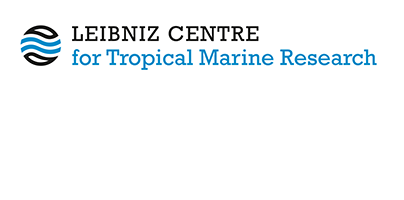Effects of crab burrows on sediment characteristics in a Ceriops australis-dominated mangrove forest.
Gillis, Lucy Gwen, Snavely, Elise, Lovelock, Catherine and Zimmer, Martin  ORCID: https://orcid.org/0000-0002-1549-8871
(2019)
Effects of crab burrows on sediment characteristics in a Ceriops australis-dominated mangrove forest.
Estuarine, Coastal and Shelf Science, 218
.
pp. 334-339.
DOI https://doi.org/10.1016/j.ecss.2019.01.008.
ORCID: https://orcid.org/0000-0002-1549-8871
(2019)
Effects of crab burrows on sediment characteristics in a Ceriops australis-dominated mangrove forest.
Estuarine, Coastal and Shelf Science, 218
.
pp. 334-339.
DOI https://doi.org/10.1016/j.ecss.2019.01.008.
|
Text
Gillis.pdf - Published Version Restricted to Registered users only Download (670kB) |
Abstract
The presence of mangrove trees and crab burrows potentially contribute to localized variation in sediment elevation and affect sediment characteristics in these ecosystems, but the interacting effects of trees and burrows are largely unknown. Using a field study and artificial burrow experiment, we investigated variation in sediment redox potential, organic matter content, carbon to nitrogen ratios and activities of microbial communities related to presence and absence of trees and burrows. The presence of mangrove trees of the species Ceriops australis decreased the redox potential of the sediment, which may favor organic matter preservation, but no significant differences were observed in percent organic matter in sediment next to trees versus distant from trees. The effects of C. australis on sediment redox conditions were counteracted by the presence of crab burrows in deeper (20 cm) sediments. The utilization of a variety of carbon sources by microbial communities varied between the surface of crab burrow walls and bulk sediment, indicating crab burrow-induced changes in microbial communities, whereas the presence of C. australis did not affect community-wide microbial activity patterns and did not interact with the effects of crab burrows. The novel artificial crab burrow-mimics replicated these results, where organic matter and carbon to nitrogen ratios did not change over the experiment course whilst redox did. Differences in carbon-utilization by microbial communities between artificial burrow walls and bulk sediment mimicked those between natural crab burrow walls and bulk sediment. Hence, in the environmental settings of this study, it was the presence of burrow structures rather than crabs that induced changes in microbial communities.
| Document Type: | Article |
|---|---|
| Programme Area: | PA4 |
| Research affiliation: | Ecology > Mangrove Ecology |
| Refereed: | Yes |
| Open Access Journal?: | No |
| DOI: | https://doi.org/10.1016/j.ecss.2019.01.008 |
| ISSN: | 02727714 |
| Date Deposited: | 22 Oct 2025 10:13 |
| Last Modified: | 22 Oct 2025 10:13 |
| URI: | https://cris.leibniz-zmt.de/id/eprint/5834 |
Actions (login required)
 |
View Item |





 Tools
Tools Tools
Tools